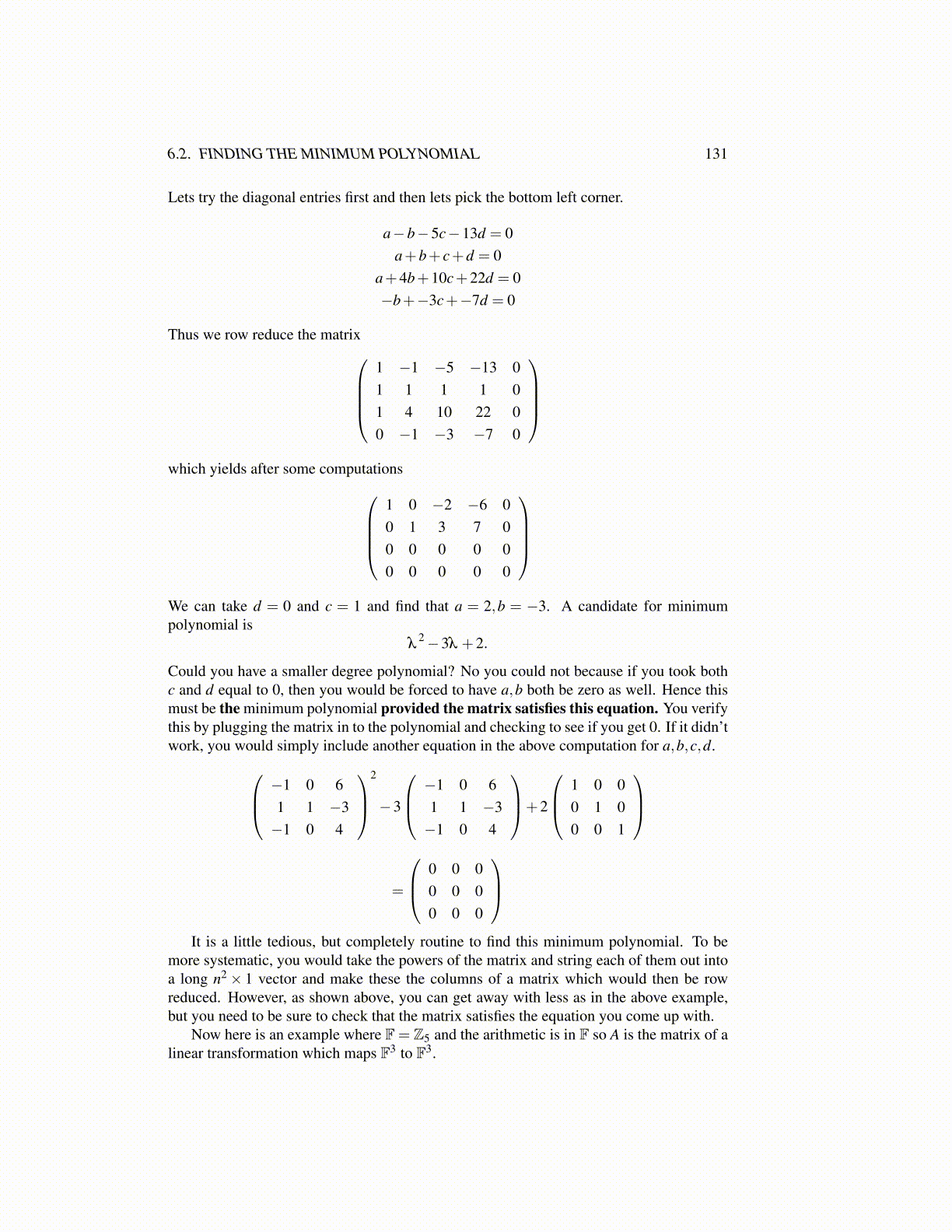
6.2. FINDING THE MINIMUM POLYNOMIAL 131
Lets try the diagonal entries first and then lets pick the bottom left corner.
a−b−5c−13d = 0a+b+ c+d = 0
a+4b+10c+22d = 0−b+−3c+−7d = 0
Thus we row reduce the matrix1 −1 −5 −13 01 1 1 1 01 4 10 22 00 −1 −3 −7 0
which yields after some computations
1 0 −2 −6 00 1 3 7 00 0 0 0 00 0 0 0 0
We can take d = 0 and c = 1 and find that a = 2,b = −3. A candidate for minimumpolynomial is
λ2−3λ +2.
Could you have a smaller degree polynomial? No you could not because if you took bothc and d equal to 0, then you would be forced to have a,b both be zero as well. Hence thismust be the minimum polynomial provided the matrix satisfies this equation. You verifythis by plugging the matrix in to the polynomial and checking to see if you get 0. If it didn’twork, you would simply include another equation in the above computation for a,b,c,d. −1 0 6
1 1 −3−1 0 4
2
−3
−1 0 61 1 −3−1 0 4
+2
1 0 00 1 00 0 1
=
0 0 00 0 00 0 0
It is a little tedious, but completely routine to find this minimum polynomial. To be
more systematic, you would take the powers of the matrix and string each of them out intoa long n2× 1 vector and make these the columns of a matrix which would then be rowreduced. However, as shown above, you can get away with less as in the above example,but you need to be sure to check that the matrix satisfies the equation you come up with.
Now here is an example where F= Z5 and the arithmetic is in F so A is the matrix of alinear transformation which maps F3 to F3.